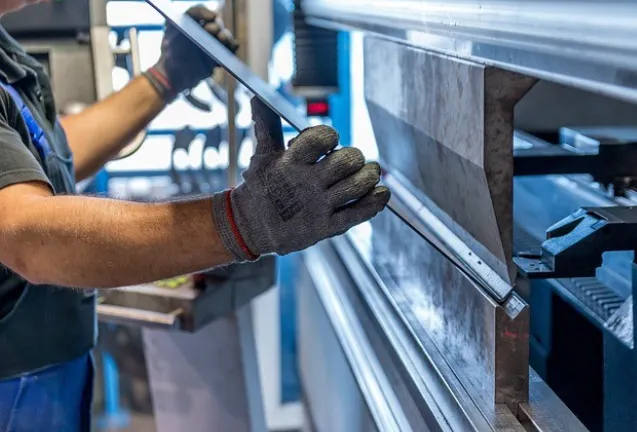When it comes to precision cutting in industries ranging from metalworking to packaging, guillotine blades play a vital role. These specialized cutting tools are designed to deliver clean, accurate cuts with efficiency and durability. Whether you’re working with sheet metal, paper, or plastics, understanding guillotine blades—how they work, their types, and maintenance—is essential to maximize productivity and product quality.
In this article, we’ll explore everything you need to know about guillotine blades, from their construction and applications to best practices for longevity and safety.
What Is a Guillotine Blade?
At its core, a guillotine blade is a type of straight cutting blade used in a guillotine shear or cutter machine. The name “guillotine” comes from the traditional guillotine execution device, which used a heavy blade dropping vertically to sever with precision and force. Today, guillotine blades have evolved but retain the same principle: a sharp blade moving downwards in a straight, vertical motion to slice through material.How guillotine blades work
In modern industrial guillotine cutters, the blade is mounted on a ram or blade holder, which is hydraulically or mechanically powered. The blade descends onto a fixed cutting bed, shearing through the material placed underneath. This method allows for precise straight-line cuts on sheets of metal, plastic, paper, or other materials with minimal deformation.
Common uses of guillotine blades
Guillotine blades are indispensable in several industries, including:
- Metal fabrication: Cutting steel, aluminum, and other metals into precise sheet sizes for manufacturing parts.
- Paper and printing: Trimming stacks of paper or cardboard with exact edges.
- Plastic processing: Cutting plastic sheets or films cleanly.
- Textile and packaging: Preparing materials for further processing or packaging lines.
Types of Guillotine Blades
Selecting the right guillotine blade depends largely on the material to be cut and the cutting machine. Here are the most common types:
High-speed steel (HSS) blades
Made from alloyed steel designed for durability and heat resistance, HSS blades offer excellent performance when cutting harder materials like steel sheets. Their ability to retain sharpness under heat and stress makes them popular in metalworking.
Tungsten carbide-tipped blades
These blades feature a tungsten carbide edge brazed onto a steel body. The carbide tip dramatically increases wear resistance and cutting lifespan, especially useful for abrasive materials or high-volume cutting.
Tool steel blades
Tool steel guillotine blades provide good toughness and are often used for cutting softer metals or plastics where a balance of sharpness and durability is required.
Serrated vs. straight-edge blades
While guillotine blades are typically straight-edged for clean cuts, serrated blades can be used in some applications to improve grip on slippery materials during cutting.
How to Choose the Right Guillotine Blade for Your Needs
Choosing the proper guillotine blade is crucial for both cutting quality and operational cost. Consider these key factors:
Material to be cut
Hardness, thickness, and abrasiveness of the material dictate the blade type and hardness level required.
Cutting capacity and speed
Higher cutting speeds and thicker materials demand blades with superior strength and heat resistance.
Machine compatibility
Ensure the blade’s dimensions and mounting method match your guillotine shear machine to avoid installation and performance issues.
Maintenance and sharpening
Some blades require more frequent sharpening or specialized maintenance. Carbide-tipped blades last longer but are harder to resharpen.
Maintaining and Sharpening Guillotine Blades
Proper maintenance is essential to keep guillotine blades cutting cleanly and safely over time.
Regular inspection
Look for signs of wear, nicks, or chips on the blade edge. Damaged blades reduce cut quality and increase machine strain.
Sharpening techniques
Sharpening must be done by experienced technicians, often with specialized grinding equipment to maintain the blade’s precise angle and edge profile.
Storage and handling
Store blades in a dry, clean environment and handle them carefully to avoid accidental damage or injury.
When to replace a blade
If the blade is severely damaged, worn beyond sharpening, or causing poor cuts, replacement is the safest and most cost-effective option.
Safety Considerations When Using Guillotine Blades
Guillotine blades are powerful tools that require proper safety protocols to prevent accidents.
Machine guarding and interlocks
Ensure your guillotine cutter is equipped with appropriate guards and safety switches to prevent accidental contact during operation.
Personal protective equipment (PPE)
Operators should wear cut-resistant gloves, eye protection, and follow safe handling practices.
Training and procedures
Proper training in blade installation, operation, and emergency procedures is critical for workplace safety.
Conclusion: The Edge You Can Rely On
Guillotine blades are an essential element of precise cutting across many industries. Selecting the right blade type, maintaining it properly, and following safety best practices ensures optimal performance and longevity. With ongoing innovations, guillotine blades continue to sharpen their role in efficient, high-quality production.
If you want to get the best results from your cutting equipment, understanding guillotine blades is a smart first step. Cutting clean and cutting right starts with the blade.
